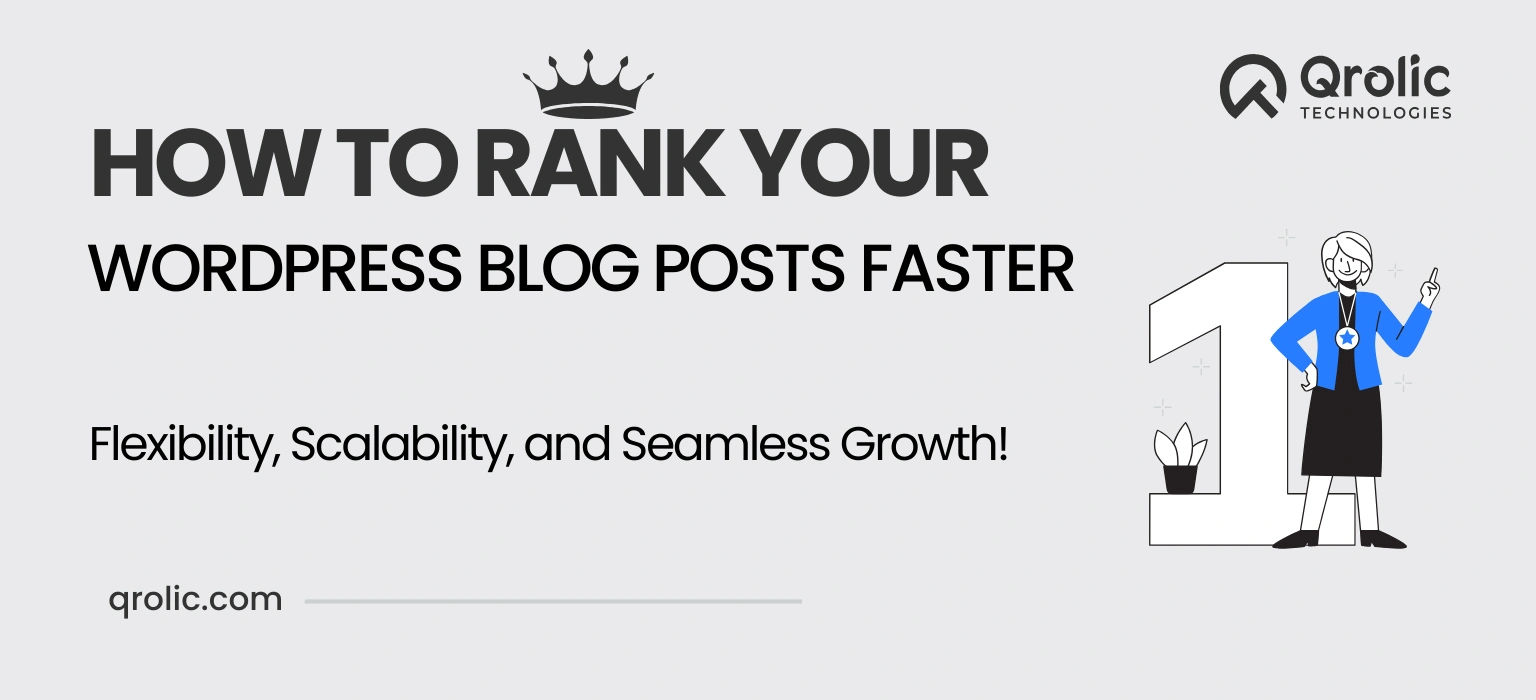Ranking WordPress blog posts on search engines like Google can be a challenging yet rewarding endeavour. With the right strategies, you can increase visibility, attract traffic, and achieve higher rankings faster. This guide offers actionable steps to optimize your WordPress blog for speedier rankings.
Quick Summary:
- Create high-quality content with relevant keywords.
- Optimize your site for speed, mobile, and on-page SEO.
- Build quality backlinks and promote posts widely.
- Monitor performance and regularly update content.
Table of Contents
- Why Ranking Fast Matters
- Key Factors Affecting Blog Post Rankings
- Steps to Rank WordPress Blog Posts Faster
- 1. Perform Keyword Research
- 2. Create High-Quality Content
- 3. Optimize for On-Page SEO
- 4. Improve Site Speed
- 5. Make Your Blog Mobile-Friendly
- 6. Use Schema Markup
- 7. Build High-Quality Backlinks
- 8. Promote Your Blog Posts
- 9. Update and Repurpose Old Content
- 10. Monitor and Improve Performance
- Common Mistakes to Avoid
- Tools to Help Rank WordPress Blog Posts Faster
- Qrolic Technologies: Your SEO Partner
- Conclusion
Why Ranking Fast Matters
- Increased Visibility: Higher rankings mean more eyes on your content.
- Traffic Growth: Fast-ranking posts drive immediate traffic to your site.
- Competitive Edge: Timely ranking ensures you stay ahead of competitors.
- Revenue Potential: Faster rankings translate into quicker monetization opportunities.
Key Factors Affecting Blog Post Rankings
- Content Quality: Unique, well-researched, and engaging content is crucial.
- Keyword Optimization: Using the right keywords improves relevance.
- Technical SEO: Site speed, mobile-friendliness, and security affect rankings.
- Backlinks: Links from authoritative sources increase trustworthiness.
- User Engagement: Metrics like time on the page, bounce rate, and clicks matter.
Steps to Rank WordPress Blog Posts Faster
1. Perform Keyword Research
- Use Tools: Leverage tools like Google Keyword Planner, Ahrefs, or SEMrush to identify relevant keywords.
- Focus on Long-Tail Keywords: These have lower competition and higher conversion rates.
- Analyze Search Intent: Understand what users expect to find when they search for your target keyword.
2. Create High-Quality Content
- Structure Properly: Use headings, subheadings, and bullet points to improve readability.
- Offer Value: Provide actionable insights, solutions, and original data.
- Add Visuals: Include images, infographics, and videos to enhance user engagement.
3. Optimize for On-Page SEO
- Title Tags: Include your primary keyword in the title. Keep it under 60 characters for better visibility.
- Meta Descriptions: Write compelling descriptions with keywords to improve click-through rates (CTR).
- URL Structure: Use short, descriptive, and keyword-rich URLs.
- Internal Linking: Link to other relevant posts on your site to improve navigation and authority.
- Alt Text for Images: Use descriptive alt text with relevant keywords for better image SEO.
4. Improve Site Speed
- Choose a Fast Hosting Provider: Invest in a reliable WordPress hosting service.
- Enable Caching: Use plugins like W3 Total Cache or WP Rocket to cache your site and reduce load times.
- Compress Images: Optimize images using tools like Smush or TinyPNG.
- Minimize Plugins: Remove unnecessary plugins to reduce bloat.
- Use a CDN: Content Delivery Networks (CDNs) like Cloudflare can speed up global load times.
5. Make Your Blog Mobile-Friendly
- Responsive Design: Ensure your WordPress theme is mobile-friendly.
- Test Compatibility: Use Google’s Mobile-Friendly Test tool.
- Simplify Navigation: Use clear menus and CTAs for mobile users.
6. Use Schema Markup
- Rich Snippets: Add structured data to help search engines understand your content better.
- Plugins for Schema: Use plugins like Schema Pro or Rank Math to implement schema easily.
7. Build High-Quality Backlinks
- Guest Blogging: Write guest posts on authoritative sites in your niche.
- Outreach Campaigns: Reach out to influencers and bloggers to share or link to your content.
- Create Linkable Assets: Develop unique resources like guides, infographics, or tools.
8. Promote Your Blog Posts
- Social Media Marketing: Share your posts on platforms like Twitter, Facebook, and LinkedIn.
- Email Marketing: Use newsletters to share new posts with your subscribers.
- Forums and Communities: Participate in relevant forums and link to your posts when appropriate.
9. Update and Repurpose Old Content
- Refresh Content: Regularly update old blog posts with new information and insights.
- Repurpose Content: Turn blog posts into videos, podcasts, or social media posts.
- Re-Optimize Keywords: Use updated keyword research to refine old content.
10. Monitor and Improve Performance
- Use Analytics Tools: Track performance with Google Analytics and Google Search Console.
- Analyze Metrics: Focus on impressions, CTR, bounce rate, and time on the page.
- A/B Testing: Experiment with headlines, CTAs, and layouts to find what works best.
Common Mistakes to Avoid
- Keyword Stuffing: Overusing keywords leads to penalties.
- Neglecting Mobile Users: Non-responsive designs hurt rankings.
- Ignoring Metadata: Missing or poorly written metadata reduces CTR.
- Poor Content Quality: Low-value content won’t attract or retain visitors.
Tools to Help Rank WordPress Blog Posts Faster
- Yoast SEO: Optimize on-page SEO effortlessly.
- Rank Math: Advanced SEO plugin with keyword analysis.
- WP Rocket: Enhance site speed and caching.
- Ahrefs: Comprehensive tool for keyword and backlink analysis.
- Google Search Console: Monitor and improve site performance.
Qrolic Technologies: Your SEO Partner
At Qrolic Technologies, we specialize in optimizing WordPress blogs for faster rankings.
- Custom SEO Strategies: Tailored solutions for your niche and goals.
- Technical Expertise: From site speed to mobile optimization, we cover it all.
- Ongoing Support: Regular updates and performance tracking to ensure long-term success.
Looking to rank your WordPress blog posts faster? Contact Qrolic Technologies today!
Conclusion
Ranking WordPress blog posts faster requires a blend of strategic planning, technical optimization, and consistent effort. By focusing on quality content, robust SEO practices, and user engagement, you can achieve higher rankings and sustained traffic growth. Start implementing these tips today and see the results for yourself!






